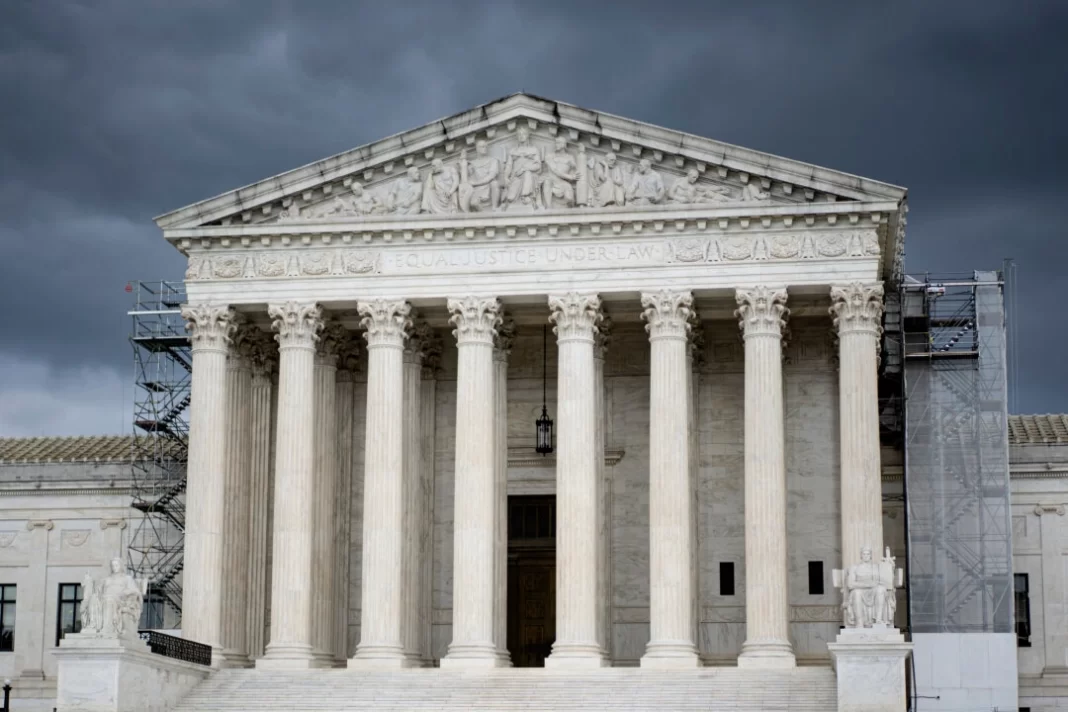Yes, you read the headline correctly. Federal student loan (student loans) account receivables are the largest asset held by the U.S. treasury. This little-known fact has not been mentioned once in the several years of controversy over President Biden’s desire to forgive all the student debt as a mechanism for “buying votes.” The debate has been over Biden’s authority to forgive the debt. What about the rights of citizens to have their country managed in the nation’s best interest by officials whose loyalty is to the country, not to a particular self-interested voting class?
The debate over student loans concerns a much larger issue than forgiving debt. It concerns the competent management of the country. Even if Biden had the power to forgive the debt, it would be gross mismanagement due to our staggering national debt.
Competent management requires an understanding of risks and benefits. Understanding the risks and benefits of any decision is essential to making effective policy. If all the benefits accrue to one side of a policy but all the risks are absorbed by the other, the policy is inequitable and will fail. This is the current situation with student loans.
The federal government has the taxpayer not only putting up all the money for the student loans but also assuming the risk of default. Taxpayers receive nothing from the deal. Conversely, students use the loan money to pay for a college education, the quality of which is not guaranteed, nor is securing a job after graduation. Without a good education and a job, it is difficult for the student to repay the taxpayer. Students who default suffer long-term consequences on their credit ratings, wage garnishment, additional collection fees, and a loss of eligibility for future federal aid.
The federal government and the universities are the main culprits in this situation. The government hands over taxpayer money to the universities without any guarantee that the university will provide a high-quality education that equips students for the workforce or that the student loan will be repaid. For almost every consumer product, no matter how inexpensive, there is a warranty of fitness for a particular purpose. This warranty is usually mandated by law, as the seller has superior knowledge of the product being provided to the consumer. Yet, for an education that could cost hundreds of thousands of dollars, there is no representation or warranty that the university will do anything to benefit the student or help the student repay the loans taken out to attend the university.
Congress must align the risks and benefits of student loans before appropriating new funds for the federal student loan program.
The cost of student loans on the federal balance sheet. The federal government’s financial situation is de facto bankrupt. The U.S. has a national debt of $34 trillion and liabilities of $43 trillion. U.S. assets are a mere $5.4 trillion. The largest chunk of these assets, $1.695 trillion, is in the form of loans receivable. Shockingly, $1.336 trillion of this is tied up in the student loan program. An additional $311 billion is in SBA Disaster Assistance Loans. The gravity of the situation becomes even more apparent when we consider that 10% of students default on their loans, and an extra 5% of all student loan debt is in default. Despite these alarming figures, the federal government continues to pump almost $100 billion annually into new student loans. This unsustainable program is nothing short of the federal government and universities siphoning money from taxpayers.
President Biden has attempted to forgive hundreds of billions of student loan debt for the last several years. While the U.S. Supreme Court blocked his attempts to forgive the debt, the common view of Biden’s largess is that it is a cynical attempt to buy student votes at election time. Biden did, however, defer student debt payments for several years, which cost taxpayers $20 billion.
A glimpse into the federal government’s delusions is the belief that its student loan program was a moneymaker for taxpayers. A GAO report on the cost of student loans estimated the original program would make $114 billion in profit by 2021. Unfortunately, GAO concluded that the program lost $197 billion.
Taxpayer funds were used to expand and enrich college administrators. According to the Wall Street Journal, one of the big reasons “…tuition rates have risen so heavily is the growth of bloated campus bureaucracies… from 1975 to 2005, the costs of a university degree tripled. Faculty-to-student ratios stayed the same, but administrator-to-student ratios skyrocketed. The number of administrators increased by 85 percent, while the number of staffers rose by a whopping 240 percent.” Senior administrator pay grew by 75% between 2003 and 2018 while faculty salaries stagnated.”
Federal subsidies cause college costs to increase substantially more than inflation. Between 1987 and 2017, the cost of college, adjusted for inflation, increased by 213%. According to UNest, “Assuming rates continue to increase 5% per year means that in 10 years, the average cost for a four-year program will be over $150,000. That’s compared to about $88,000 today.” Commentators attribute the rising cost of college to their focus on profit-maximizing the enterprise rather than concern for good education.
In addition to an endless supply of loans, the federal government showers the most prominent universities (Harvard, Columbia, Stanford, etc., “the riot schools”) with billions of dollars in contracts and subsidies. Between 2018 and 2022, the federal government gave ten elite universities $28 billion in subsidies. It also allowed these schools to collect an average overhead payment of 64% on the billions of federal contracts they performed, an extra $18 billion. The federal monies received as overhead are deemed discretionary income to the schools and can be used for any purpose.
To put the vast wealth of university endowments in perspective, university endowments are more significant than the annual budgets of each state in the nation, except California and New York. “…Harvard’s endowment of $53 billion exceeds the gross domestic product of 124 countries.” As of FY 2023, U.S. educational institutions’ total endowment market value stood at $839 billion, with an average of $1,215 billion across all institutions.”
Options to align the risks and benefits of the Student Loan Program. Colleges and Universities are huge businesses that are almost entirely un-taxed except for a 1.4% tax on net investment income on colleges with endowments exceeding $500,000 per student. Since colleges have become big businesses, they should be treated as a business. Options for realignment:
1. One potential solution is to use the vast endowments of universities to provide free tuition. While this may seem like a radical idea, a few colleges, including some very elite ones, are already tuition-free. A prime example is Berea College in Kentucky. At Berea, no student has paid tuition since 1892. Despite this, the school ranks # 30 best in National Liberal Arts, # 16 best in teaching, and #3 for innovation. The billions in endowments held by elite universities could easily fund a tuition-free model, ensuring that the benefits of these endowments are put to better use than hiring more administrators.
2. Recognize the universities for what they are: profit-making machines, and tax all income from whatever source derived, just as ordinary citizens are taxed.
3. If universities remain tax-free, Congress should require the universities to draw down their endowments, like drawing down an IRA by setting Mandatory Distribution Requirements.
4. Turn the student loan program over to the private sector to finance and collect. This option at least has an outside party (banks) making creditworthiness determinations for each applicant and the schools that receive the borrowed money.
5. If the federal government wants continued involvement in the student loan program, it should lend directly to the University. The University would be the borrower and be responsible for making, collecting, and repaying the loans. The University would select students it believes would most benefit and be able to repay the loans to the university.
Once the universities are responsible for loan repayment, they will reform the loan program, and likely the university itself, to ensure its repayment. Until the universities are responsible for providing a quality education for the monies received, they will continue wasting taxpayer money on bureaucracies, programs of dubious educational value, and buildings that are more resort-like than educational.
The federal government has an obligation to protect its largest asset held in trust for taxpayers.
William L. Kovacs, author of Devolution of Power: Rolling Back the Federal State to Preserve the Republic. Received 5 stars from Readers’ Favorite. His previous book, Reform the Kakistocracy, received the 2021 Independent Press Award for Political/Social Change. He served as senior vice president for the U.S. Chamber of Commerce and chief counsel to a congressional committee. He can be contacted at wlk@ReformTheKakistocracy.com







